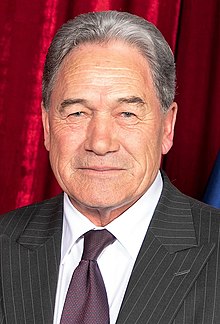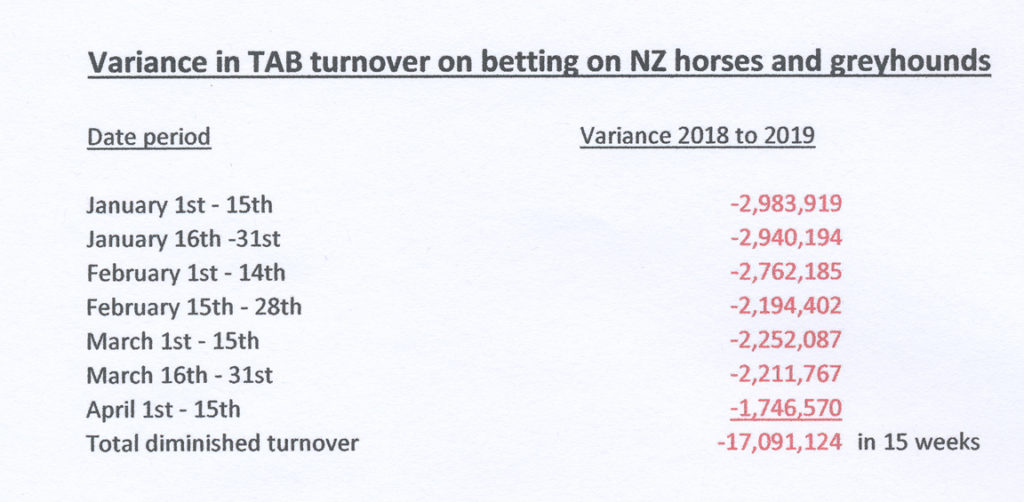by Brian de Lore
Published 3 May 2019
Racing Minister Winston Peters returned to New Zealand from a round trip to Iceland, Scandinavia, and Doha last Sunday, but before jet-lag had set in, and within 24 hours of his return, he had kindly made himself available for a phone interview for The Optimist.
Peters, in a very jovial mood, light-heartedly suggested an alternative name to The Optimist by saying, “You should have called your column Phoenix Rising, but never mind.” That suggestion, I conceded, could be placed on hold for future consideration.
But what wasn’t on hold was the Minister’s enthusiasm, his commitment, and his energy to drive the racing industry reform well beyond positive recent announcements that have sparked reform and set a new legislative process into motion.
“What I can say to the industry,” began Peters, “is that we have commenced with a thorough process of what was happening, and what was not happening against international comparatives.
“We have come to some serious conclusions, and we have done our utmost to put every one of those conclusions into effect as fast as we possibly could, given the timeframe we had – this governmental legislation is not as fast as many would have hoped but is still very rapid in terms of the big picture.
“There is so much going on in parliament with other legislation; I am pleased to be able to say that it’s on track in the tight schedule we had available to us.”
The Minister’s time reference was an acknowledgment that while progress during his 18-months as Minister had seemed tediously slow to an ailing racing fraternity, in terms of the legislative process through parliament, the headway achieved was at full gallop.
By July 1st, racing people will have a very clear picture of where we are going,” continued Peters. “They should know well in advance of where we are heading if they have read the Cabinet papers, and if they have read the Messara Report – the first paper to read was the Messara Report, the second was the MAC Interim Report, and the third was the Cabinet Papers, and the fourth will be the bill itself passing through parliament.
“The framework has been set-up, and alongside that, I hope to announce something well before Budget 2019 on May 29th, I can’t say exactly when because I haven’t got the time fixed, but I hope to make a clear statement well before the Budget, and about what it means for racing now. When I know, I’ll tell you where it will be.”
Predictably, this imminent announcement may be about the building of a synthetic or all-weather track, but also due for release soon is the personnel make-up of RITA (Racing Industry Transition Authority) which will take control of the racing industry on July 1st. It seems logical to assume that once these people have been chosen and know who they are, their names will quickly be made public.
One could argue that the make-up of RITA will be the single most important decision Minister Peters will make for racing this year. Why, because racing has a history of poor governance with the wrong people getting appointed to key positions which has influenced the precarious financial predicament that racing faces today.
Putting that argument to the Minister, he responded: “No appropriate or correct system will work without the personnel to go with it. You have to look at the big picture, and I want to turn this industry around and have a serious revival of racing in this country and getting the systems right, and we have to stick to the plan and clearly the people, the right men and women to run it, is critical.
“I’m seriously happy with MAC (Ministerial Advisory Committee) – they started work on the 4th of January; they have shown commitment, completed a lot of work and made a lot of progress. We got the right man in Messara to write the review, and we have the right man in McKenzie – I’m happy with that.”
Logic would tell you that subject to availability all five members of MAC will transition to RITA with the addition of a further two for a total seven. The appointment of the additional two and the skills they should possess is documented in Cabinet Paper Two on page six under the heading of Governance of Rita.
Governance of RITA says:
29. The RITA Board will govern both the BAU (business as usual) functions of the former NZRB and the management of change necessary for the successful transition to the new arrangements proposed by the Messara Report. To enable the appointment of a refreshed Board for RITA, Bill No. 1 will end the terms of serving NZRB Board members when RITA is established.
30. A Board of up to 7 members is proposed for RITA, with the majority having skills related to change and the remainder with skills related to BAU. To carry out these roles effectively, the members of RITA should collectively have competencies that include governance and:
30.1 industry expertise to effectively manage racing functions;
30.2 knowledge and experience of sport at a national level;
30.3 commercial and/or legal expertise to manage devolution of assets, functions and responsibilities; and
30.4 change management expertise to oversee the transition process.
31. It is important that the members of RITA have a strong primary duty to act in the best interest of the racing industry as a whole and the achievement of the transition objectives. Accordingly, it is not intended to create specific code representative positions on the RITA Board and the Chair will not be independent (as currently with the NZRB). This is a change from the current requirements for appointment to the NZRB Board, where the chairs of each racing code (or their delegates) are appointed.
32. The Minister for Racing will provide a paper to the Appointments and Honours (APH) Committee as soon as possible on the proposed membership and Chair of RITA, to enable governance arrangements to be in place for the intended establishment date of 1 July 2019. The MAC was created as a precursor to the establishment of RITA. The Minister for Racing is looking for continuity between the work of the MAC and RITA.
33. The appointments will address the need for the membership of RITA to include a national level sports perspective, either through the appointment of MAC members who have both racing and sports experience, or the appointment of a specific person with a sports background. The Minister for Sport and Recreation will be consulted regarding this.”
The requirements in clause 30 are all met by existing members of MAC, but in clause 31 it says: “It is important that the members of the RITA have a strong primary duty to act in the best interest of the racing industry.”
As only two of the five MAC members have a strong racing background, it seems logical that the two additional members should essentially be racing people that can contribute with a range of skills including personalities conducive to the transition of management. It is not a requirement of the new legislation for the establishment of RITA to have code representatives as was the case with the soon to be defunct NZRB.
Recently a small window of opportunity was accorded to the three codes to nominate prospective members for RITA, but no guarantee exists on the Minister’s behalf to appoint any of the nominees.
The danger for racing is the prospect of the DIA having too much say about the make-up of RITA, and subjecting the additional board members to the criteria of the State Services Commission. Retired former Deputy Commissioner of Police Malcolm Burgess was last month appointed to review the RIU (Racing Integrity Unit).
Burgess is not a racing man and has been asked to deliver his report by the end of May. Is it too skeptical to think the depth of the report, given the non-racing background of Burgess and the time permitted for its completion, will render it of doubtful value? Would not have retired NSW Chief Stipendiary Steward Ray Murrihy been a better choice if neutrality to racing’s participants had been a defining factor.
As it says at the top of this story, the appointment of RITA is crucial to the racing industry’s future. RITA’s role begins on July 1st, and it has the job of enacting the contents of Bill No. 1, and afterwards later in the year everything in Bill No. 2. Once all the transitioning to the new legislation is complete, in around one year, a permanent structure commences, and RacingNZ replaces RITA.
In the meantime, NZRB is going to miss their budget by a country mile by season’s end, and RITA will inherit the deficit. In last year’s SOI (Statement Of Intent) the budgeted profit was $173 million – the shortfall may be around $25 million. If racing gets the duty back on Budget Day on May 29th, and you add-in income from voluntary racefields and savings are made in other areas, stakes money will stay at the current level in the new season.
The three Cabinet papers released last month contain a large number of redactions which could influence one to believe something more for racing than just the duty might be on the cards for the industry.
Cheekily pressing the Minister for budget information during this week’s chat, he responded, “You know what the term ‘budget sensitive’ means – I can’t breach that.
“But I can say this, that due to the comprehensive and detailed nature of budgets which has been the case for decades now, there will be budgetary announcements made before the 29th of May – I am looking for a space to make a pre-budget announcement which would answer your question.”


